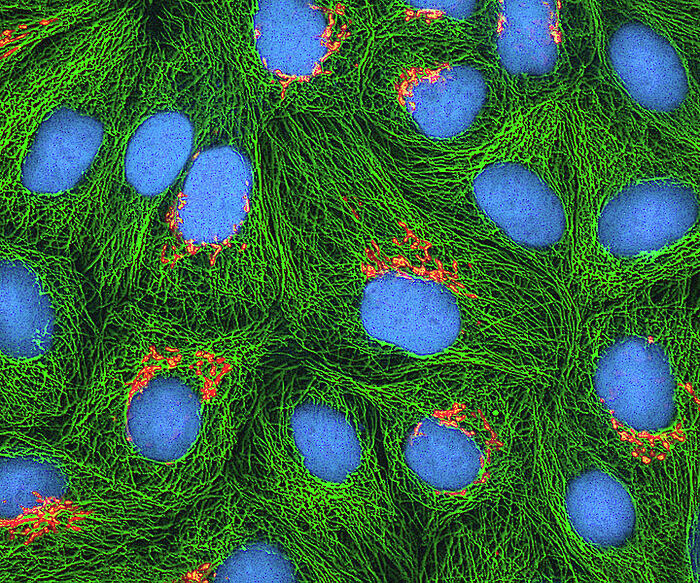Genetic engineering: hacking a different type of code
Sofia Weiss look at the future of editing embryos, given the advent of the novel technology CRISPR

On first appraisal, Wednesday 2nd August seemed like a veritable landmark for human gene-editing. An international team of researchers published results most can only dream of, suggesting that the CRISPR-Cas9 editing technique, a method that allows scientists to make precise changes to genomes, could be used to correct a disease-causing mutation in dozens of viable human embryos.
Despite the allure of hacking our genomes with CRISPR, the practicalities of the technique still leave much to be desired
The study, which focused on altering mutations in the gene MYBPC3, known to cause the heart muscle to thicken and associated with sudden death in young athletes, was thought to represent a significant improvement in efficiency and accuracy in the usage of CRISPR over previous efforts. However, I use the words ‘thought’ and ‘seemed’ advisedly, for just under three months later, potentially irretrievable reservations have surfaced over the Nature paper. Critics argue that Mitalipov’s team was misled into believing that they had corrected the mutation by relying on a genetic assay that was unable to detect a far more likely outcome of the experiment: that CRISPR had introduced a large deletion in the paternal gene. The peaks and troughs of this discovery serve to highlight that despite the allure of hacking our genomes with CRISPR, the practicalities of the technique still leave much to be desired - particularly in context of the long-term goal of treating disease.
There are two chief ingredients in the CRISPR-Cas9 system: a Cas9 enzyme that snips through DNA like a pair of molecular scissors, and a small RNA molecule that directs the scissors to a specific sequence of DNA. The cell's native DNA repair machinery mends the cut, and this can be harnessed by providing a template for repair, the hope being that the genome will be fixed in the way you want it to. Sadly, however, this is an imperfect science, and the genetic code is merciless: a minor error introduced during repair can completely alter the sequence of the protein it encodes, or halt its production altogether. Our inability to control exactly where CRISPR-Cas9 makes all its cuts and where such cuts are rejoined means that, rather than the genetic scalpel desired, we currently have a butcher’s knife. Thus defects in the technology itself, as well as oversights at the bench, are more often ruinous than not.
There’s also a concern about human hubris. Who gets to decide what’s an ‘improvement’ on a genome?
Nevertheless, with thousands of labs the world over engaged in an arms race for revolutionary results, the ethics of chopping-and-changing the germline should not be ignored – they might soon have to be dealt with in the clinic, after all. The trouble here is that unlike with editing somatic cells, alterations to a defective gene in an egg or a sperm cell would be passed on to future generations. This could change the genetic make-up of humans, likely in unpredictable ways. The most compelling argument against human germline engineering is perhaps that subjects involved in medical research should always give fully informed consent; since the individuals whose lives are potentially affected by germline manipulations could extend many generations into the future, they can’t possibly agree to having their genetic material altered from what nature would have otherwise made conceivable.
There’s also a concern about human hubris. Who gets to decide what’s an ‘improvement’ on a genome? Is it simply eradicating maladies, or is it creating six-foot blue eyed Cambridge student-types? Although the stuff of dreams - and nightmares - for futurists, I’d argue that this concern is more science-fiction than science-reality. Overall, the potential benefits of genetic modifications in embryos are substantial, and we can circumvent many arguments by remembering that such editing should be treated like any other medical procedure: with benefits weighed against harms. It should not be halted pre-emptively out of sheer terror. Ultimately, we affect the genetic make-up of our offspring every time we choose one partner over another, and every time we expose ourselves to dangerous chemicals or even excessive sunlight. Genetic editing would be a droplet in the whirlpool of naturally churning genomes. What we do need to do is be careful about using these technologies. In particular, the tools of CRISPR hold promise, but need significant refinement before they can even be considered for medical treatment
 News / Candidates clash over Chancellorship25 April 2025
News / Candidates clash over Chancellorship25 April 2025 News / Cambridge professor paid over $1 million for FBI intel since 199125 April 2025
News / Cambridge professor paid over $1 million for FBI intel since 199125 April 2025 Interviews / Dr Ally Louks on going viral for all the wrong reasons25 April 2025
Interviews / Dr Ally Louks on going viral for all the wrong reasons25 April 2025 Music / The pipes are calling: the life of a Cambridge Organ Scholar25 April 2025
Music / The pipes are calling: the life of a Cambridge Organ Scholar25 April 2025 Comment / Cambridge students are too opinionated 21 April 2025
Comment / Cambridge students are too opinionated 21 April 2025






